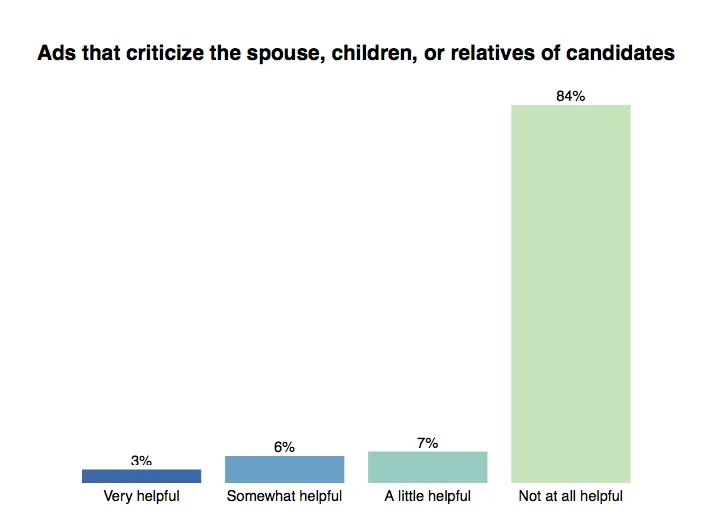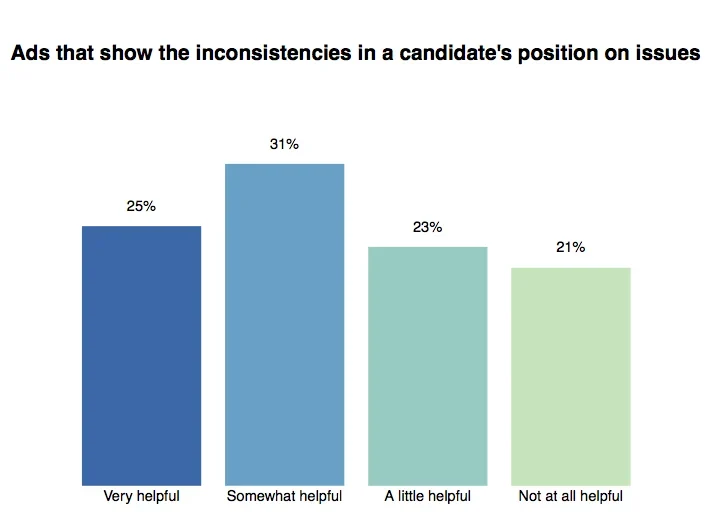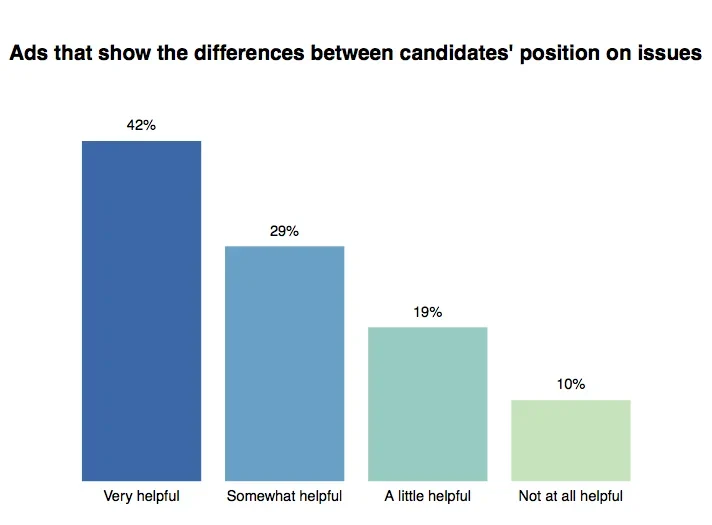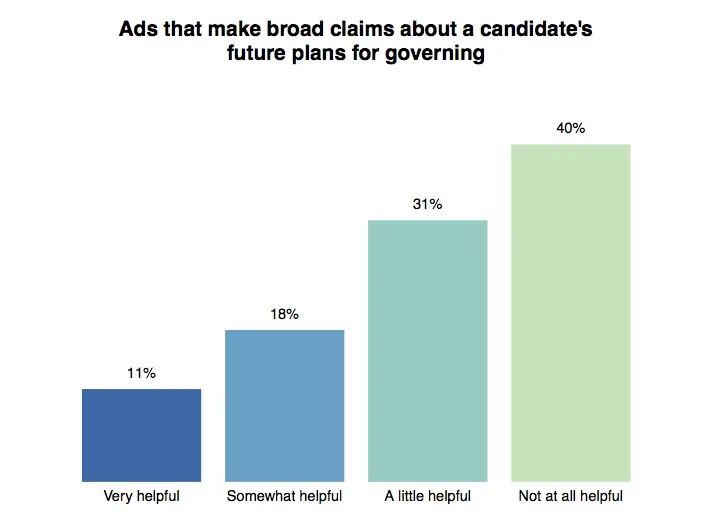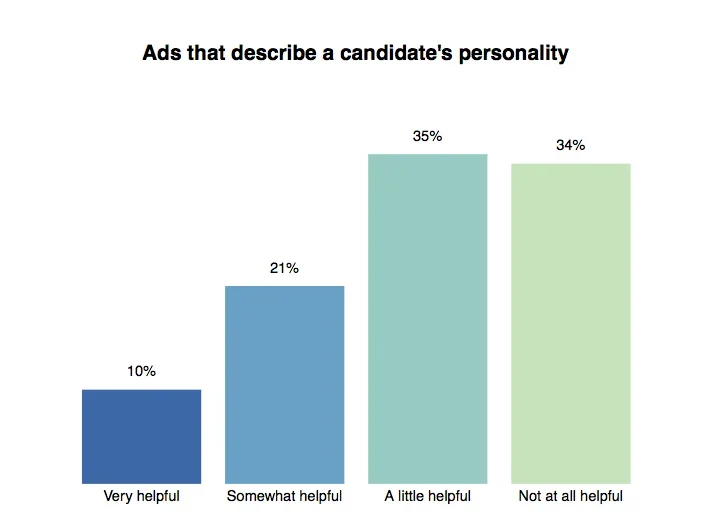Most Americans claim not to like “negative” ads. But what they really do not like is the term “negative.” Voters actually see merit in candidates’ raising doubts about each other. What they react against are unfair, personal attacks. So, it is no surprise that 85% of Americans viewed ads that criticized the spouses and families of candidates as “not at all” helpful. However, the public does see value in relevant personal and policy based attacks. Consider that 56% of the public found information in ads that show “the inconsistencies in a candidate’s positions on issues” as either “very” or “somewhat” helpful. In other words, most of the public wants to know if a candidate “flip-flops.” The public also welcomes information that compares candidates’ views on issues, which, by definition, involves some level of criticism or what we often call “contrast.” Specifically, 71% of Americans found ads that show “the candidates’ differences on issues” as “very” or “somewhat” helpful.
Interestingly, 71% of the public also find ads that “make broad claims about a candidate’s future plans for governing the broad plans of candidates” as “a little” or “not at all” helpful. This result is noteworthy, since the public, in effect, is saying that positive ads are not all that helpful. We know from previous content analyses of political ads that positive ones tend to be more vague and prospective than the more specific, retrospective negative ads. The public is also not enamored with spots that just talk about a candidate’s personal traits. They want to know more about issues, which again is something that is part of parcel of negative ads at the presidential level (see the link above).
These findings from a recent Economist/YouGov Poll are timely, since the 2012 presidential campaign will surely be the most negative in modern times. The 2008 battle between Obama and McCain was the most negative since the advent of television. The Obama-Romney race will surely break that record. Why? We have an increasingly polarized political system, two presidential nominees with obvious flaws, and the rise of Super PACs—a near perfect recipe for lots and lots of attack ads.
As negative ads fill the airwaves, journalists and pundits will inevitably start complaining about how these attacks turn off the public and undermine the electoral process. In other words, there will be negativity against negativity—an irony that in and of itself deserves some attention. Yet the data above show that the public is not opposed to criticism per se. This more nuanced thinking by Americans about “negative” information is important as pundits and journalists begin to judge, assess, and evaluate the many attack ads that will be coming our way. The public does not want a “positive” only campaign. What they want is a robust conversation about the respective merits of the two candidates. That discussion may be heated at times and will surely cross the line occasionally. The public is capable of wading through all of that. It would be helpful for those in the news media way to keep that in mind as they undertake their assessments of the advertising in the 2012 presidential campaign. In other words, perhaps we should consider a positive campaign for negativity.
